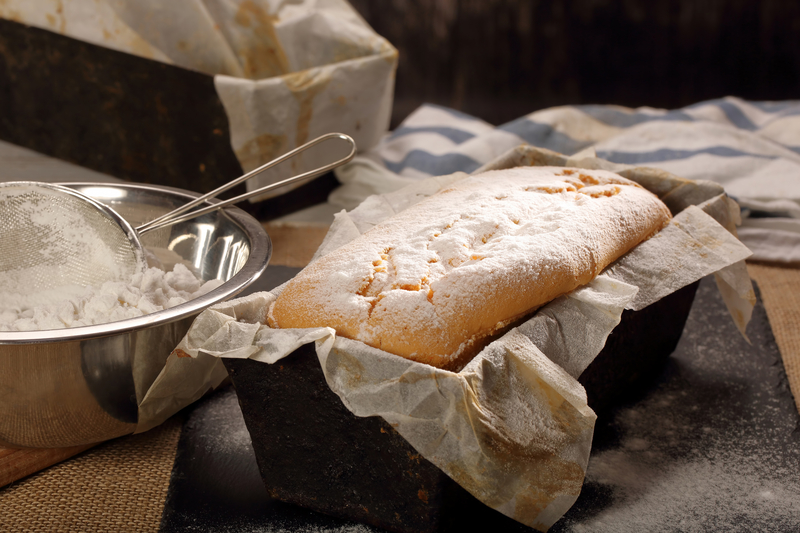 Baking is a beloved culinary art that combines science and creativity in the most delightful way.
Baking is a beloved culinary art that combines science and creativity in the most delightful way.
It’s not just about following a recipe; it’s about understanding the chemistry behind the ingredients and how they interact to produce mouthwatering treats.
This article will delve into the fascinating world of baking chemistry, exploring the key ingredients and their interactions.
The Flour Factor
- Protein Content
One of the fundamental ingredients in baking is flour, and its protein content plays a crucial role.
Flour can be categorized as low-protein (cake flour), medium-protein (all-purpose flour), and high-protein (bread flour).
The protein, primarily gluten, is responsible for the structure of baked goods.
When combined with water and agitated, gluten forms an elastic network that traps gas bubbles, contributing to the rise and texture of baked goods.
- Starch Gelatinization
Apart from gluten, flour contains starch, which undergoes gelatinization during baking.
Gelatinization occurs when starch granules absorb water and swell.
This process thickens the batter or dough, providing structure and contributing to the final texture of the baked product.
For example, a higher starch content can yield a crumbly texture in shortbread cookies.
Fats – Beyond Flavor

- Emulsification
Fats in baking, such as butter or oil, serve various functions, including providing moisture and flavor.
They also play a role in emulsification, a process where fat molecules surround and trap water molecules.
This creates a stable and uniform mixture, improving the texture and shelf life of baked goods.
Emulsified fats are commonly found in cakes, making them tender and moist.
- Laminating Dough
In pastry making, fats are often layered with dough through a process known as laminating.
This creates a flaky and crispy texture, as seen in croissants and puff pastry.
The repeated folding and rolling of dough with fat create distinct layers that expand during baking due to steam, resulting in the characteristic flakiness.
The Sweet Side – Sugars
- Caramelization
Sugars, such as sucrose, play a dual role in baking chemistry.
They sweeten the baked goods and contribute to browning through caramelization.
Caramelization occurs when sugars break down under heat, forming new compounds with complex flavors and a desirable golden-brown color.
This reaction is responsible for the crispy top of crème brûlée and the deep hues of a well-baked loaf of bread.
- Fermentation and Yeast Feeding
In recipes that involve yeast, sugars are essential for fermentation.
Yeast consumes sugars and produces carbon dioxide gas, causing the dough to rise.
This process creates airy and light bread, rolls, and pastries.
Understanding the balance of sugar is crucial for achieving the desired texture and flavor in yeast-based baked goods.
The Leavening Agents

- Baking Soda and Baking Powder
Leavening agents, like baking soda and baking powder, are essential for making baked goods rise.
Baking soda requires an acidic ingredient (e.g., yogurt, buttermilk) to activate it, producing carbon dioxide gas.
Baking powder contains both an acid and a base, allowing it to produce gas when mixed with liquids and heated.
The gas bubbles expand during baking, creating a light and airy texture in cakes, muffins, and pancakes.
The Role of Liquids
- Hydration and Steam
Liquids, including water, milk, and fruit juices, are vital for hydrating the ingredients and facilitating various chemical reactions.
The heat from the oven turns these liquids into steam, which contributes to the rise of the baked goods.
Steam also helps set the structure of the product, preventing it from collapsing as it cools.
The Importance of Eggs

- Protein and Moisture
Eggs are versatile ingredients in baking, providing both protein and moisture.
The proteins in eggs coagulate during baking, helping to set the structure of cakes and custards.
They also emulsify fats and trap air, making baked goods tender and light.
Egg yolks, with their fat content, contribute to richness and flavor.
The Art of Flavorings
- Extracts, Spices, and Aromatics
Flavorings like vanilla extract, spices, and aromatic ingredients like citrus zest or cocoa powder add depth and character to baked goods.
The compounds responsible for these flavors are released and enhanced through baking.
For example, the heat of the oven amplifies the aroma of vanilla and transforms the bitterness of cocoa into a rich, chocolaty flavor.
Bottom Line – The Chemistry of Baking
 Baking is an exquisite blend of science and art, where ingredients interact through various chemical reactions to create the delightful treats we savor.
Baking is an exquisite blend of science and art, where ingredients interact through various chemical reactions to create the delightful treats we savor.
Understanding the chemistry of baking not only allows for better control over the final product but also opens the door to endless creative possibilities in the world of culinary delights.
Whether you’re a seasoned baker or a novice, exploring the intricate chemistry of baking can elevate your skills and the enjoyment of your homemade creations.
So, the next time you step into the kitchen to bake, remember that it’s not just about following a recipe—it’s about mastering the chemistry of ingredients and their interactions.


